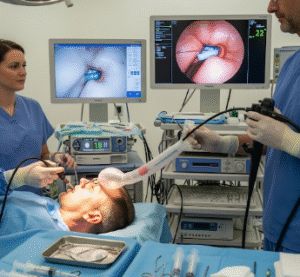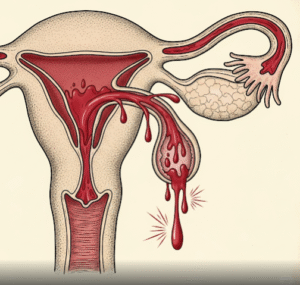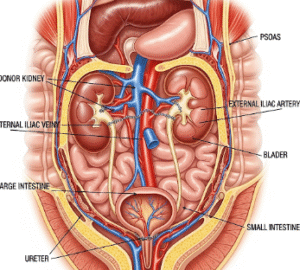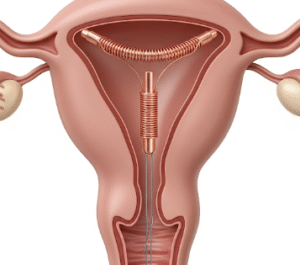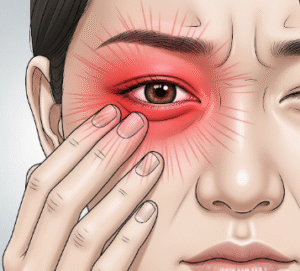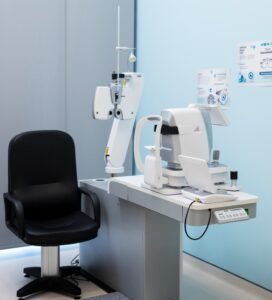Overview
High temperature, commonly referred to as fever, is a temporary rise in body temperature above the normal range of 36.1–37.2°C (97–99°F). Fever is usually a symptom rather than a disease, reflecting the body’s immune response to infection, inflammation, or other underlying conditions.
In South Korea, hospitals and clinics provide comprehensive evaluation for high temperature, including diagnostic testing, treatment, and monitoring to identify underlying causes and manage symptoms effectively.
Key Facts
🟢 ➤ High temperature is defined as body temperature above 38°C (100.4°F).
🟢 ➤ Can be caused by infections, inflammatory conditions, heat-related illness, or medications.
🟢 ➤ May be accompanied by sweating, chills, fatigue, headache, or muscle aches.
🟢 ➤ Persistent or very high fever requires medical evaluation to prevent complications.
🟢 ➤ Diagnostic tests include blood tests, urine tests, imaging, and physical examination.
🟢 ➤ South Korean healthcare facilities provide both conventional and advanced care for fever management.
What is High Temperature?
A high temperature occurs when the body’s thermoregulatory set point rises, often in response to infection, inflammation, or other triggers.
Key points:
➤ Normal body temperature fluctuates throughout the day, typically between 36.1°C and 37.2°C (97–99°F).
➤ Fever is generally considered protective, as it can enhance immune function and inhibit the growth of pathogens.
➤ Can be acute or chronic, depending on underlying causes.
➤ In some cases, extremely high temperatures (>40°C or 104°F) may indicate serious illness or heatstroke, requiring urgent care.
Symptoms Related to High Temperature
Symptoms vary depending on cause, severity, and individual factors:
🟢 ➤ Elevated body temperature, often above 38°C (100.4°F).
🟢 ➤ Chills or shivering as the body attempts to reach a higher temperature set point.
🟢 ➤ Sweating once the fever breaks.
🟢 ➤ Headache, muscle aches, joint pain, and general fatigue.
🟢 ➤ Rapid heartbeat or increased breathing rate in severe fever.
🟢 ➤ In children or elderly, confusion, irritability, or lethargy may be present.
Causes / Possible Causes
High temperature can result from a wide range of infectious, inflammatory, or environmental factors:
Infections
➤ Viral infections (influenza, COVID-19, common cold).
➤ Bacterial infections (urinary tract infection, pneumonia, sepsis).
➤ Parasitic infections (malaria, other tropical infections).
Inflammatory and Autoimmune Disorders
➤ Rheumatoid arthritis, lupus, or inflammatory bowel disease can cause fever.
Heat-Related Illness
➤ Heat exhaustion or heatstroke due to prolonged exposure to high temperatures or physical exertion.
Medication or Drug-Induced Fever
➤ Certain antibiotics, vaccines, or drugs may trigger fever as a side effect.
Other Causes
➤ Cancer (especially leukemia or lymphoma).
➤ Endocrine disorders (hyperthyroidism).
➤ Post-surgical or post-trauma fever.
When Should I See a Doctor?
Seek medical evaluation if:
🟢 ➤ Fever persists for more than 3 days without an obvious cause.
🟢 ➤ Body temperature exceeds 40°C (104°F).
🟢 ➤ Fever is accompanied by severe headache, stiff neck, breathing difficulty, rash, or confusion.
🟢 ➤ There is a history of chronic illness, immunosuppression, or recent surgery.
Early evaluation ensures timely diagnosis and treatment, preventing complications like dehydration, seizures, or organ dysfunction.
Care and Treatment
Management of high temperature focuses on addressing the underlying cause, reducing symptoms, and preventing complications:
Home Care Measures
➤ Adequate hydration to prevent dehydration.
➤ Light clothing and a cool environment to aid heat dissipation.
➤ Rest to allow the body to focus on immune response.
➤ Over-the-counter antipyretics like acetaminophen or ibuprofen as directed.
Medical Management
➤ Antibiotics or antivirals if fever is caused by bacterial or viral infections.
➤ Hospitalization and intravenous fluids for high fever, dehydration, or severe infection.
➤ Monitoring for complications such as sepsis or heatstroke.
Advanced Care in Korea
➤ South Korean hospitals provide state-of-the-art diagnostics, including blood cultures, imaging, and lab tests to identify the cause of fever.
➤ Integrated care involves infectious disease specialists, internists, and emergency medicine teams.
➤ Patient education emphasizes early detection, hydration, medication compliance, and fever monitoring.
Highlights (Clean Green Arrow Version)
🟢 ➤ High temperature (fever) is a body temperature above 38°C (100.4°F), indicating infection, inflammation, or other causes.
🟢 ➤ Symptoms: chills, sweating, headache, muscle aches, fatigue, rapid heartbeat, and in severe cases, confusion.
🟢 ➤ Causes: viral or bacterial infections, autoimmune disorders, heatstroke, medications, cancer, or endocrine disorders.
🟢 ➤ Seek medical attention for persistent, very high, or complicated fevers.
🟢 ➤ Treatment includes hydration, rest, antipyretics, antibiotics/antivirals, and management of underlying conditions.
🟢 ➤ South Korea offers advanced hospital care with comprehensive diagnostics, treatment, and patient education for high temperature.


